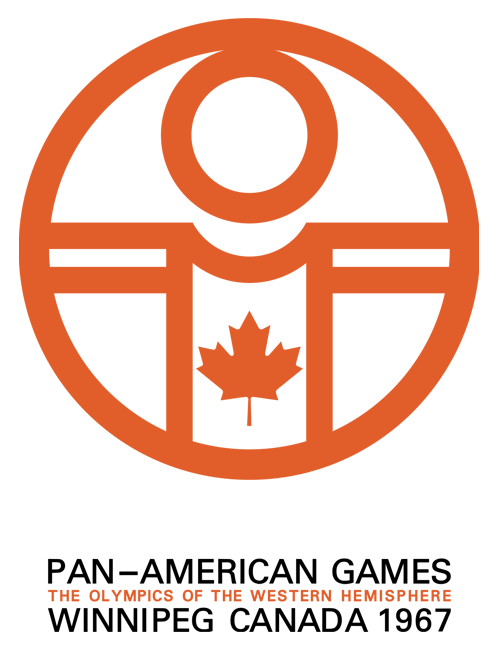
U.S. Wins Pan American Matches
Strong squad wins 11 of 12 gold medals and sets 7 Games record
By John A. Harper, Jr., NRA Staff
The U.S. Shooting Team swept the Pan American Games shooting events in Winnipeg, Manitoba, Canada, July 24 - 30, winning 11 gold medals, 3 silver medals, and 2 bronze medals, for a total of 16 of the 36 medals awarded.
The overwhelming victory of the U.S. Shooting Team in the Pan American Games is the result of much effort of many people, led by the NRA. After the Games, NRA Executive Vice President Franklin L. Orth commented: "The magnitude of the victory is fantastic. The stature of the NRA among sportsmen is now at an all-time high."
Only since 1948 has the United States actively endeavored to develop a shooting capability over the courses of fired in matches conducted under the International Shooting Union rules. The NRA rejoined the ISU that year, after a lapse of 18 years, and began to develop a program that would lead American shooters to the winner's platform in International shooting events.
That effort has taken two courses: 1) The introduction in 1948 into ISU competition of the so-called English Match, a modification of the Dewar Course, and the Center-Fire Pistol Match, an event that is a distant relative of the U.S. National Match Course. 2) The altering of U.S. competition rules to permit use of the small bore version of the free-rifle and the active promotion in the U.S. of tournaments featuring International courses of fire.
The military marksmanship training units built the first International ranges in the U.S. and have actively trained groups of shooters over International courses. The colleges and universities, with liberalized rules permitting the use of free-rifle attachments and accessories, and their emphasis on 3-position 50-ft. shooting, have produced an ever growing body of shooters capable of firing good scores over the International courses.
Today U.S. competition seems to be reaping the results of almost 20 years of effort to restore the United States to the winner's stand in International shooting competition.
U.S. shooters won gold medals in all 6 team events and in 5 of the individual events. Four scores in the team events were good for new Pan American records and three scores in the Individual events established new Pan American Records.
Canada was the only nation besides the U.S. to win a gold medal in shooting. Alfons Mayer, a Kitchener, Ont., mechanic, scored a world and Pan American record 598x600 to win the English Match, 60 shots prone at 50 meters with the caliber .22 rifle.
Free-pistol team record
The U.S. won both team and individual gold medals in the free-pistol event. The team score of 2171 is a new Pan American Games record, eclipsing the 2170 fired by the U.S. Team in the 1963 Pan American Games. Herschel Anderson, U.S. Army staff sergeant from Ft. Benning, Ga. scored a near record breaking 548 (the record is 549) to win the 60-shot event fired at 50 meters with a precision single-shot pistol. The win was the first American victory in a major international competition with the free-pistol since 1955.
In the team event Herschel Anderson's teammate Arnold Vitarbo fired a very strong 554 that established a news individual record for the Pan American Games, but Vitarbo was not in competition for individual honors. Under the shooting rules of the Pan American Games, only two of the 4 men entered in a team event fire for individual honors and these two must be designated before shooting begins. U.S. team Captain and Coach Harry Reeves had named Anderson and Air Force Maj. Franklin C. Green as competitors in the individual event. Reeves pointed out that the U.S. free-pistol team was unusually deep in talent, remarking that any one of the four free-pistol shooters can beat another on a given day. Green's 532 was good for 9th place.
Breaks of the game
One official, in commenting on the free-pistol event, said:
"Those are the breaks of the game. The U.S. captain selected Anderson and Green as is starters. Who knows, had Vitarbo been selected for the individual shooting he may have cracked under the pressure."
Mexican veteran pistol shooter Javier Peregrina was second in the individual free-pistol event, scoring 545, only 3 points behind match winner Anderson. Peregrina was leading Anderson going into the sixth 10-shot string. However, in those last 10 shots he dropped 10 points while Anderson lost only 4.
The Cuban free-pistol team of Nelson Onata, Andress Sequiro, Enrique Borbonet, and Arturo Costa accumulated 2127 points to place second to the U.S. The Cuban pistol team was reported to have a Russian coach.
Alfons Mayer, the sandy-haired German who came to Canada in 1957 and won Canada's only gold medal in shooting at the Pan Americans, was given an official score of 598. Mayer was down one point in each of his last 10-shot strings in the 60-shot prone 50-meter event with the small bore rifle. The preliminary and unofficial listing on the scoreboard at completion of the match showed Mayer and U.S. Army Capt. Bruce Meredith tied with 594 totals.
Mayer said at the time:
"I think when the judges are through I will have 3 or maybe 4 more points. I talked with Meredith and he thinks, if anything, he may lose one."
Mayer was correct in his estimate. He got 4 more points and Meredith lost one point, which put him in fourth place, behind U.S. Air Force Capt. Rhody L. Nornberg and Olegario Vazquez of Mexico, all three with 593 totals.
In discussing his victory, Mayer said:
"I knew I was going well. I felt my first 40 shots were perfect. That's when I started getting the shakes. When that happens, then you have to pull yourself together and concentrate. I think it was my 46th or 47th shot, I finally missed.
"There was not much wind and the light was perfect. I made only two clicks. The wind shifted slightly at one point and I adjusted two clicks. I made one shot, then I clicked back into the former position. If I had waited a bit I wouldn't have had to change my sights at all, but I didn't want to lose time."
Mayer's score broke the Games record by 8 points and equaled the world record set in Western Germany in 1966. In fact the first five shooters surpassed the Games record of 590, set in 1963.
Mayler led the Canadian team to second place in the English Match with a 2363 score. Mexico finished third with 2347. Both the U.S. and Canada surpassed the Games record of 2349.
David Ross, III, of Philadelphia, firing only in team competition, scored 598 to tie the world record score shot by English Match winner Mayer. Gary Anderson, also shooting only for team score, turned in a 595.
Maj. William W. McMillan, USMC, won the rapid-fire pistol silhouette match with a 581, only one point ahead of Colombia's Alirio Maya with 580. U.S. shooter Edwin L. Teague scored 579 to place third.
The U.S. rapid-fire pistol team won the gold medal in the silhouette match with a 2307 total. Venezuela finished second with 2283 and Mexico placed third with 2260.
Capt. Thompson's Win
Capt. Margaret Thompson, USA, scored 1152 in the .22 3-position match at 50 meters to become the first woman to win a gold medal in rifle shooting in International competition. Also her score established a new Pan American record of 1152 for the event, and led a strong U.S. contingent to a gold medal in the team event. Capt. Thompson fired 391 kneeling to tie the world record.
Lt. Gary L. Anderson, who won the 1966 World Championships in both the 300-meter, 3-position, free-rifle event, and the 50-meter 3-position, .22 rifle event in Wiesbaden, Germany, finished third with 1139. Anderson shot the .22 3-position event under the handicap of a high fever. At times visibly affected, Anderson stood up under the fever throughout the hours long match, putting shot after shot into the bullseye.
The strong U.S. 3-position team, which included Capt. Bruce A. Meredith with 1141 and Army Lt. John H. Writer with 1139, scored 4571 for a new Pan American Games record. The Canadian team placed second with 4502 and Mexico was third with 4465.
Marine S/Sgt. Francis A. Higginson and Army M/Sgt. William B. Blankenship finished one-two in the Center-Fire Pistol Match with scores of 593 and 586. In third place with 586 also was Canada's Dr. Jules Sobrian.
The Center-Fire Pistol Match combines 30 shots at bullseye targets at 25 meters in precision (slow-fire) shooting and 30 shots at silhouette targets at 25 meters in dual (modified rapid-fire silhouette) shooting. Higginson scored 296 in precision and 297 in duel, while Blankenship fell 13 points to 287 in precision shooting but scored 299 in duel shooting.
The U.S. team scored 2342 to Canada's second-place 2280 and Venezuela's third-place 2264.
The U.S. Skeet Team and Marine Lt. Allen W. Morrison established new Pan American Games records in International Skeet competition. Shooting in a stiff breeze that put flags out straight and shifted direction continually, Morrison put together scores of 25-24-23-25-25-25-24-24, starting from the low gun position required in International skeet and shooting at a target that moves faster and over a longer distance than the target in domestic skeet.
Cuba scored 376 to place second, and Chile tallied 373 for third in skeet team competition.
Second in individual skeet match was Robert F. Schuehle with 193. Cuban shooter Delfin Gomez placed third with 188 after scoring 23 in a shootoff.
Harry Reeves, Captain of the U.S. Shooting Team, is a hard-bitten campaigner. Many times National Pistol Champion, former firing member of many U.S. International teams, and a retired inspector of police in Detroit, Reeves is not given to expansive statements. When he said to a newspaper reporter at the conclusion of the Pan American Matches "I think we have acquired the depth to at least match the Russians medal for medal in the 1968 Olympics," he was indicating his belief that the U.S. has now come of age in International competition. When it is remembered that at the 1964 Olympics in Tokyo, the U.S. team won 2 gold medals, 2 silver medals, and 3 bronze medals to the USSR's 2 silver medals, Reeves' remarked is a gem of understatement.
American Rifleman, Vol. 115, No. 10, October 1967
U.S. Shooting Team
Rifle Members
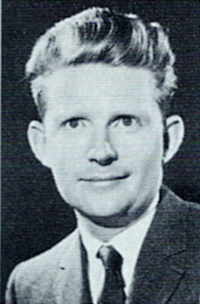
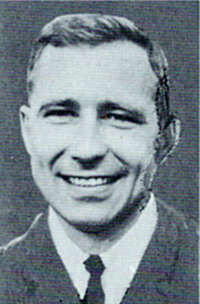
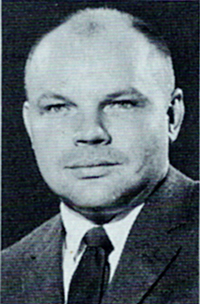
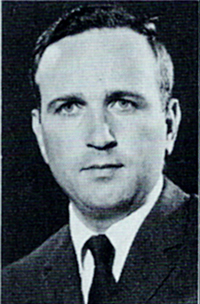
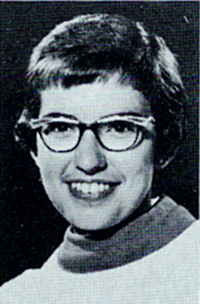
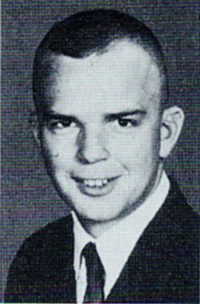

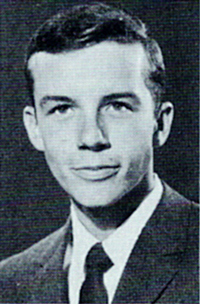
Gary L. Anderson, Bruce A. Meredith, Rhody L. Nornberg
David Ross, III, Margaret Thompson and John Writer
Alternates: David I. Boyd, II and Robert Randle
Pistol Members
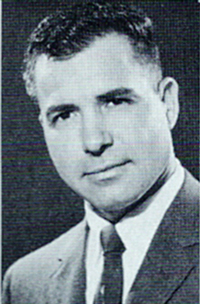
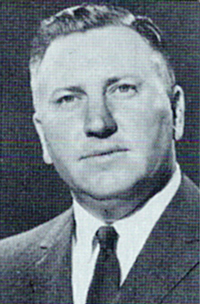


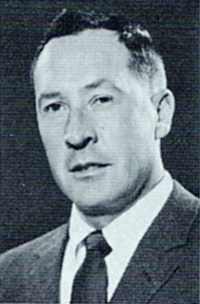
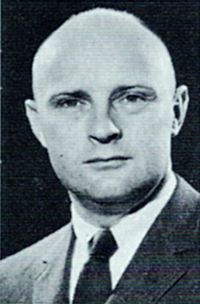
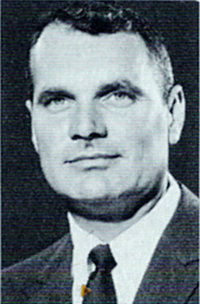
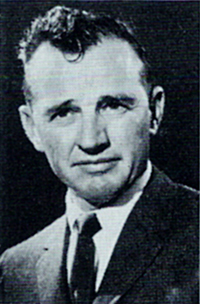
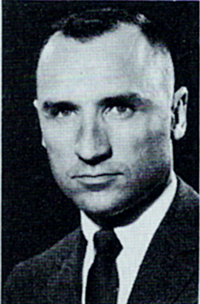
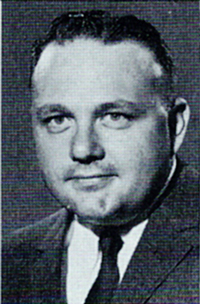
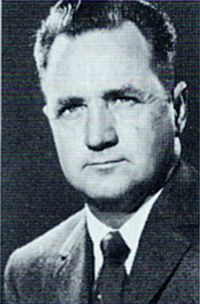

Hershel Anderson, William Blankenship, Franklin Green, Donald L. Hamilton, Bonnie Harmon
Francis Higginson, William W. McMillan, Aubrey Smith, Edwin L. Teague, and Arnold Vitarbo
Alternates: Robert Dueitt and Ralph Thompson
Skeet Members
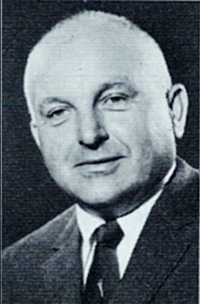
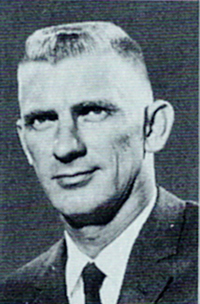
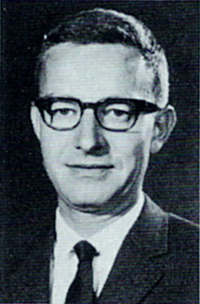
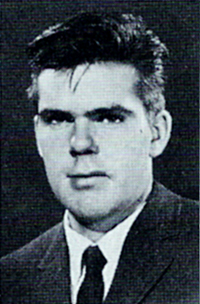
Allen F. Buntrock, Allen W. Morrison, Robert Rodale and Robert Schuehle
Team Management & Support
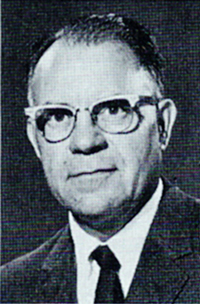

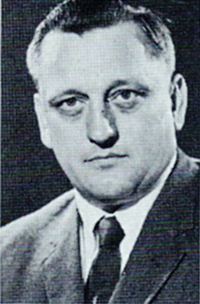
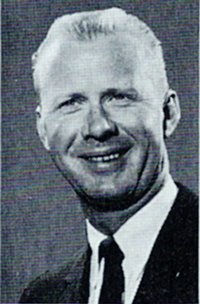
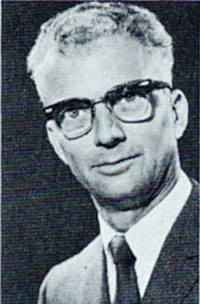
Harry Reeves (Team Captain), Fred Keifer (Team Adjutant), Raymond Berthnay (Rifle Armorer), David R. Breeding (Pistol Armorer) and E. Frank Coleman (Shotgun Armorer)
U.S. Shooters Prepare For Pan-American Meet
Twenty-four of the nation's top shooters tasted the sweet wine of victory in the International Championships recently completed here. They will represent the United States in the big battle for Pan-American shooting supremacy later this month in Winnipeg, Canada.
Heading the nations shooters are World Champions: Lt. Gary Anderson, Lt. Margaret Thompson and M.Sgt. William B. Blankenship. Together they brought back 12 Gold Medals to the United States from the 1966 World Shooting Games, in Wiesbaden, Germany. Members of the U. S. Army Marksmanship training Unit earned ten of the 24 team places. They are all banded together with four Marines, two civilians, six Air Force and two Navy men to make the U. S. Team the best the nation has ever fielded.
Gary Anderson fired record scores to earn his berth on the Prone and Position Rifle Teams. His teammate will be Capt. Bruce Meredith who placed on the Position Team and shot a record shattering 1790 to earn top spot on the Prone Team.
Olympic Medalist
The U. S. Team competing in Rifle, Pistol and Skeet contests will be further bolstered by Olympic Medalist Maj. William McMillan, USMC, Pan-American Medalist Maj. Franklin Green, USAF, and PO1C Donald Hamilton twice National Pistol Champion.
Bill Blankenship will be a firing member of all three of the Pistol Teams, giving the U. S. a triple threat for a Gold Medal win in Pistol competition.
Margaret Thompson will also strengthen the team.
Skeet Team
Bob Schuehle from Roselle, Ill., and Robert Rodale, former U. S. team member Allentown, Pa., will represent the U. S. on the Skeet Team.
In the alternate slots they have such shooters as World Champion WO David Boyd, USMC, A1C Robert Randle, USAF and Army's M.Sgt. Ralph Thompson.
The team will journey to Minneapolis this weekend for processing and briefing, then will go on to Winnipeg, Canada for the Games. The big test comes July 24-28 for Rifle and Pistol Teams, and July 29-30 for the Skeet Team.
Supporting the U. S. Team will be Harry Reeves, six-time National Pistol Champion, as team manager and Frederick Keifer, director of the Army's International Teams, as Adjutant. Raymond Behnay, from the US AMTU will be the rifle armorer, S.Sgt. David Breeding, USAF, pistol armorer, and E. Frank Coleman, shotgun armorer.
The Bayonet, Friday, July 21, 1967
Pan Am Domination by U.S. Nears Embarrassing Pitch
WINNIPEG, Manitoba, July 27 (AP) - The United States' harvest of gold medals at the Pan American Games threatened tonight to turn into an embarrassing cascade of richness.
With only 17 events completed, America has 13 gold firsts, seven silver seconds and three bronzes against Canada's two golds, five silvers and four bronzes - and immediately ahead lies a probable half dozen more in wrestling plus an almost certain three in swimming.
Maj. William McMillan, 38, a hard-bitten Marine from Camp Pendleton, Calif., started off the day victoriously by winning the rapid-fire pistol competition with 581 out of a possible 600 points. Alirio Maya of Columbia was second with 580 and Sgt. Ed Teague of San Antonio, Tex., was third with 579.
Asle Rallies to Win
Major McMillan promptly pointed out the sergeant should have won had not his pistol misfired in the final six-second sequence, costing him ten points.
The United States won the rapid-fire pistol team championship as well with 2307 points. The U.S. team was composed of Maj. McMillan, Carlsbad, Calif., 581; Sgt. Teague, 579; Sgt. Bill Blankenship, Columbus, Ga., 564, and Pvt. Aubrey Smith, Columbus, Ga., 583. Venezuela was second with 2283 and Mexico third with 2226.
Excerpt from The Washington Post, July 28, 1967
Leathernecks Victorious
Three Marine Corps marksmen bested a competing field of the top shooters in the Western Hemisphere recently at the Pan American games in Winnipeg, Manitoba and returned home with seven first-place gold medals.
Depot dinger Maj. William McMillan of WTBn. fired his way to the individual gold medal in rapid-fire pistol competition, as well as helped the U.S. pistol team to the meet title.
Two other Marines from MCS Quantico also picked up first place awards for their marksmanship prowess. 2nd Lt. Allen Morrison fired a 195x200 to take the Pan American International Skeet Championship.
Not content with this shooting title, Lt. Morrison snared two other gold medal awards, one in the skeet badge shooting event and one in the skeet team event.
SSgt. Frank Higginson, also of Quantico, took first place medals in both the individual and team pistol competition to run the Marine medal total to seven.
MCRD Chevron, Friday, August 18, 1967
Army Wins 24 Gold Medals At 5th Annual Pan Am Meet
WINNIPEG, Manitoba (ANF) — U.S. Army Athletes won 24 gold medals for the United States in 14 individual and team events during the Fifth Pan American Games which concluded here recently.
S.Sgt. Herschel Anderson won the first gold medal of the international competition and started the U. S. team on its way to 120 gold medals, which equaled the Games record. He won the first of his two gold medals in the individual free-pistol contest.
The U.S. team dominated the Games in competition with teams from 28 nations. The Games attracted nearly 400,000 spectators to this midwestern Canadian city, the smallest community ever to host the Pan American Games.
4 Silver, 8 Bronze
In addition to four gold medals for individual performances and 20 first place medals for participation in 10 team victories, Army competitors won four silver and eight bronze medals.
M.Sgt. William B. Blankenship, Jr., won three gold medals as a member of three first-place shooting teams. He placed second in the individual center-fire pistol competition to win a silver medal and to become the top U. S. Army medal winner.
Sgt. Blankenship was a member of the free-pistol, rapid-fire pistol, and center-fire pistol teams. The U. S. free-pistol team, which also included Sergeant Anderson and SFC Aubrey E. Smith, set a Games record.
World Record
A four-man U. S. rifle team, which included three Amy members, Capt. Bruce A. Meredith, Capt. David Ross, and Second Lt. Gary L. Anderson, set a world record in the English Match Rifle event with its first place score of 2,379 points.
Four Amry officers, firing as the U. S. small-bore .22 caliber rifle team, set a Games record in winning their event. Members were Captain Meredith, Lieutenant Anderson, Captain Margaret L. Thompson, and Second Lt. John H. Writer.
Capt. Thompson also set a Games record in winning the small-bore .22 caliber rifle individual competition and tied a world record in the kneeling position phase of the event.
In another outstanding individual gold medal performance, Spec. 5 James R. Wallington, Jr., scored a knock-out in the second round to win the light welterweight boxing title.
PFC John F. Glair won a gold medal in the 10,000-meter canoeing singles competition and placed second for a silver medal in the 1,000-meter canoeing singles.
Other Gold Medals
Other gold medal winners included:
Maj. J. Paul Bechem, kayaking, 10,000-meter pairs and 1,000-meter pairs.
S.Sgt. Bonnie D. Harmon, member, center-fire pistol team.
2nd Lt. Arthur R. Ashe, Jr., tennis, mixed doubles.
2nd Lt's Barry M. DeBolt and Kenneth W. Smith, members, baseball team.
2nd Lt. Michael B. Sillman and PFC John Clawson, members, basketball team.
The Bayonet, Friday, August 18, 1967
3 Marines Top Pan-Am Shoot
QUANTICO, Va. — Three Marine Corps shooters came home from the Pan American Games at Winnipeg with seven first place gold medals.
Second Lt. Allen W. Morrison and SSgt. Francis Higginson, of Quantico, and Maj. William McMillan, of Camp Pendleton, bested the finest shooters in the American hemisphere.
McMillan won the rapid fire pistol individual event and was on the winning pistol team. Higginson won medals for both team and individual pistol evens.
Morrison, winner of three gold medals in skeet shooting, is officer-in-charge of the Marine Corps Skeet and Trap Team here. His first gold medal was for the individual Pan American International Skeet Championship. With 12 other countries vying for the title, he blasted a final tally of 195 out of a possible 200.
For his second gold medal, he joined two other shooters to win the skeet team laurels. Despite a target-breaking Cuban team close behind, the Americans finished first.
the lieutenant's third gold medal was on in the badge shooting event. Shooters firing 94 and above out of a possible 100 received a gold medal. Morrison had a high score of 97.
Navy Times, August 23, 1967
| Place | Name | Country | Total Points |
|---|---|---|---|
| 1st | William W. McMillan | USA | 581 |
| 2nd | Alirio Maya | Colombia | 580 |
| 3rd | Edwin L. Teague | USA | 579 |
| 4th | F. De Castro | Venezuela | 576 |
| 5th | Homero Laddaga | Mexico | 574 |
| 6th | Victor Castellanos | Guatemala | 572 |
Source: 1968 US Olympic Book
| Place | Country | Team Members | Total Points |
|---|---|---|---|
| 1st | USA | Aubrey E. Smith: 583 William W. McMillan: 581 Edwin L. Teague: 579 William B. Blankenship: 564 |
2307 |
| 2nd | Venezuela | 2283 | |
| 3rd | Mexico | 2266 | |
| 4th | Cuba | 2258 | |
| 5th | Argentina | 2248 | |
| 6th | Colombia | 2241 |
Source: 1968 US Olympic Book
| Place | Name | Country | Total Points |
|---|---|---|---|
| 1st | Francis A. Higginson | USA | 593 |
| 2nd | William B. Blankenship, Jr. | USA | 586 |
| 3rd | Dr. Jules Sobrian | Canada | 586 |
| 4th | Manuel Larranaga | Mexico | 580 |
| 5th | Guillermo Rincon | Venezuela | 578 |
| 6th | J. G. Machado | Jamaica | 571 |
| 7th | Augusto Villafrade | Colombia | 570 |
| 8th | C. D. Ferreira | Brazil | 568 |
| 9th | Edwin Velasquez | Peru | 568 |
| 10th | Jorge Lucas | Argentina | 567 |
Source: 1968 US Olympic Book
| Place | Country | Team Members | Total Points |
|---|---|---|---|
| 1st | USA | Francis A. Higginson: 593 Donald L. Hamilton: 587 William B. Blankenship: 586 Bonnie D. Harmon: 586 |
2342 |
| 2nd | Canda | 2280 | |
| 3rd | Venezuela | 2264 |
Source: 1968 US Olympic Book
| Place | Name | Country | Total Points |
|---|---|---|---|
| 1st | Hershel L. Anderson | USA | 548 |
| 2nd | Javier Peregrina | Mexico | 545 |
| 3rd | Edgar Espinoza | Venezuela | 542 |
| 4th | Seguro Vita | Peru | 538 |
| 5th | Hector Aspita | Argentina | 538 |
| 6th | Leopoldo Martinez | Mexico | 538 |
Source: 1968 US Olympic Book
| Place | Country | Team Members | Total Points |
|---|---|---|---|
| 1st | USA | Arnold Vitarbo: 554 Hershel L. Anderson: 548 William B. Blankenship: 537 Franklin C. Green: 532 |
2171* |
| 2nd | Cuba | 2127 | |
| 3rd | Mexico | 2118 | |
| 4th | Colombia | 2097 | |
| 5th | Peru | 2091 |
Source: 1968 US Olympic Book







